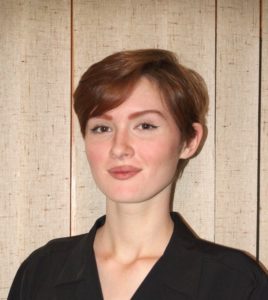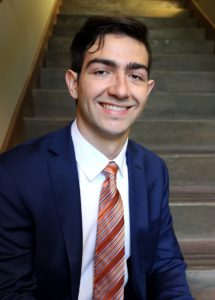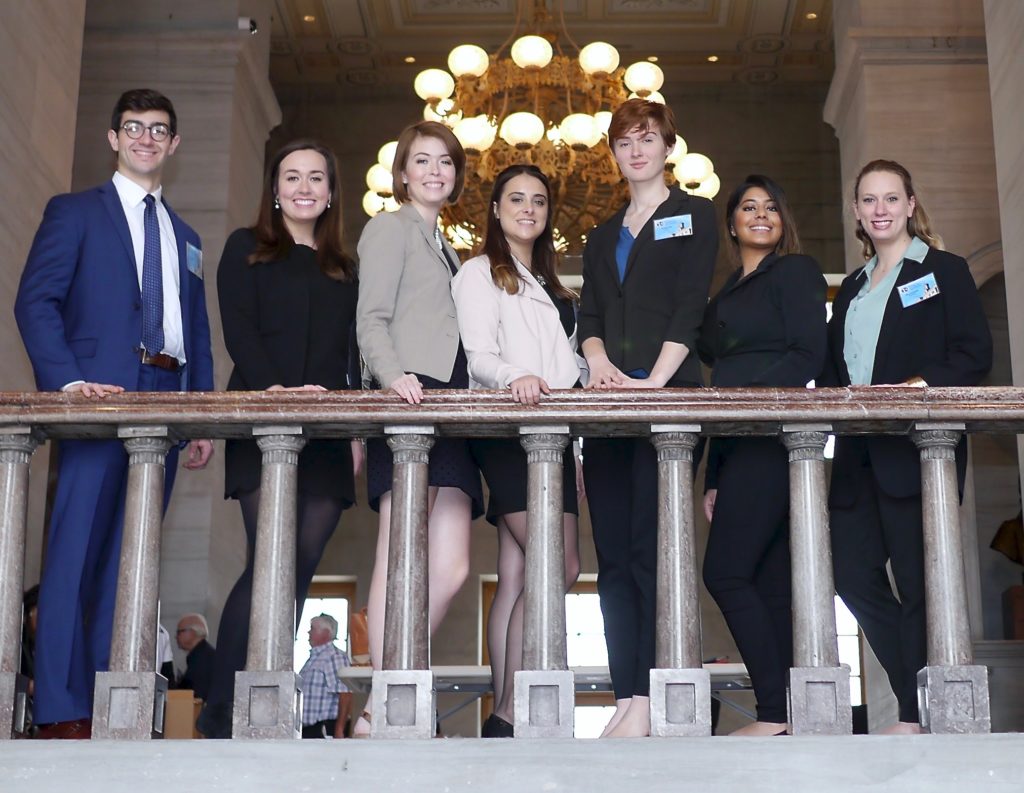Seven students have been selected to represent the University of Tennessee, Knoxville at the 2018 Posters at the Capitol event, February 20, 2018 in Nashville, TN.
 Student: Morgan Hartgrove
Student: Morgan Hartgrove
Faculty Mentor: Laurie Meschke
Project Title: Treating Infants with NAS: An Examination of Three Protocols
Abstract: Neonatal abstinence syndrome (NAS) is an infant withdrawal disorder associated with prenatal opioid exposure. On average, newborns with NAS stay in the hospital 800% longer (16.9 days) than infants without NAS (2.1 days). Nationally, NAS accounts for $1.5 billion in hospital charges, with the majority of these costs paid by state Medicaid programs. Treatment protocols vary, but can shorten hospitalization time; however, research on which protocols most effectively treat NAS is limited.
To address this gap, we examined health record data of East Tennessee infants diagnosed with NAS across three distinct treatment protocols: (1) no rescue dose, (2) doctor driven protocol with rescue dosing, and (3) nurse driven protocol with rescue dosing. Preliminary findings indicate that the use of a rescue dose, regardless of the medical administrator, significantly reduced opioid weaning and hospitalization time. The fiscal impact of NAS protocol calls for the attention of professional organizations and legislators to promote evidence-based best practices in treating opioid withdrawal of infants with NAS.
 Student: Elle Johnson
Student: Elle Johnson
Faculty Mentor: Laura Miller
Project Title: The role of social support on college freshmen eating and nutrition habits
Abstract: Evidenced by the trope of the “freshman 15,” college student nutritional habits can have both a short term and life-long impact on health and well-being. Social support has been well documented to encourage healthy eating. However, little is known of social support’s role in the context of college student nutrition. Therefore, the following research question was posed: What role does social support play in helping college freshmen maintain healthy eating habits? This qualitative study uses in-depth interviews to explore what types of social support college freshmen receive, perceive they could receive and wish they were receiving in regards to healthy eating and nutrition. First-year students living on-campus with a meal plan at the University of Tennessee, Knoxville are interviewed about the frequency and types of conversations had about healthy eating with peers and family. The interviews also explore the role of university support in encouraging student nutrition. A thematic analysis of interview transcripts using a constant comparative method will provide qualitative data to organize and identify emerging themes. The results of this study will address the social support needs of college freshmen and set the foundation for proposed university policies and initiatives to support student nutrition on a social level.
 Student: Valerie Lick
Student: Valerie Lick
Faculty Mentor: Samantha Murphy
Project Title: The Cold War at Home: Impact of Anti-Communist Government on Women’s Activism
Abstract: The early Cold War, defined as the years from roughly 1945 to 1965, was a period of social unrest and political suspicion for the United States. The branches of the government tasked with investigating potential Communists, such as the HUAC, viewed many political and economic organizations as potential hotbeds of Communist activity. Interactions between the anti-Communist government and citizen organizations during this era are extensively studied. However, much of the body of research does not address the way that gender expectations informed the government’s anti-Communist efforts against organizations led by or comprised of women. This project examines various women-led campaigns of the era and government action against them in terms of gender and family dynamics in order to show the importance of these dynamics in analyses of Cold War government. It also analyzes the social and political reasons for the government to suspect women’s organizations of Communist activity or ideology, as well as the successful strategies used by women’s organizations to avoid or survive government action. The government’s anti-Communist actions disproportionately targeted American women’s campaigns for social, economic, and political change during the early Cold War because of the threat they presented to gender roles.
 Student: Gayatri Nandwani
Student: Gayatri Nandwani
Faculty Mentor: Erin Darby
Project Title: Archaeometric Approaches to the Roman Near East
Abstract: The purpose of my research this summer has been to participate in a full suite of archaeometric and geoarchaeological analyses, particularly as they are applied to sedimentology. The first section of my research focused on an introduction to these procedures at the UT Archaeological Research Laboratory (ARL), including laboratory safety procedures, proper sample collection and processing methods, and introduction to methods and purposes for a variety of laboratory analyses including grain size distribution analysis, organic matter and inorganic carbon analysis, and microartifact analysis. Preliminary geoarchaeological field investigations were carried out by Howard J. Cyr, the project geoarchaeologist (University of Tennessee Archaeological Research Laboratory) during the 2015 and 2017 seasons at ‘Ayn Gharandal in Jordan and these data were analyzed by Cyr and myself. The primary research goal was to test the applicability and feasibility of geoarchaeological methods at the site and measure natural change and anthropogenic impact. The preliminary results clarify natural environmental change over time at the site, indicate the nature of anthropogenic impact, and suggest that the natural landscape as it appeared in the Roman period continued for some time and differed significantly from the landscape as it appears today.
 Student: Jessica Ossyra, Aaron Crigger
Student: Jessica Ossyra, Aaron Crigger
Faculty Mentors: Thomas Meek
Project Title: Fabrication of Dense UO3 Pellets for Neutron Detection Applications
Abstract: High-efficiency detection of neutrons is fundamental to societal safety and the advancement of a variety of fields including nuclear medicine, high-energy physics, nuclear energy, and radiochemistry. Helium-3 and boron trifluoride currently provide the vital capability of direct conversion neutron detection, but each present difficulties due to cost, rarity, and toxicity. While previous research on uranium oxides has focused on their use as nuclear fuels, recent research has shown these uranium compounds exhibit semi-conducting characteristics with a broad range of electrical properties. These properties make them potential candidates for use as direct conversion neutron detectors.
UO3 discovered to not densify through traditional sintering methods (i.e. solid state sintering). Additionally, UO3 when left at atmospheric conditions, was found to form hydrates. These were visible through a color change over time.
This project determined a procedure for fabricating uranyl oxide pellets and verified validity through preliminary characterizations including density, resistivity, microstructure and PXRD.
 Student: Summer Smith
Student: Summer Smith
Faculty Mentor: Ahmed Bettaieb
Project Title: Pyruvate Kinase M2 Deficiency Promotes a Brown Fat-Like Phenotype in White Adipocytes
Abstract: Obesity is a growing epidemic that presents a major health problem worldwide. The past decade has seen advances in the identification of specific factors that contribute to this condition. However, despite these strides, there is still much to be learned about the underlying mechanisms. A better understanding of these biochemical mechanisms will enhance our ability to prevent and treat obesity. The conversion of white adipocytes that store fat into brown adipocytes, which burn fat, represents an anti-obesity therapeutic strategy. This study demonstrates that knockdown of pyruvate kinase M2 (PKM2) changes white adipocytes into behaving like brown adipocytes. PKM2 is an enzyme that functions in glycolysis to catalyze the transfer of a phosphate from phosphoenolpyruvate to ADP resulting in the formation of pyruvate and ATP. The role of PKM2 in adipocytes is unexplored. In the present study, we focused on investigating the impact of PKM2 on white adipocyte cell fate or differentiation. We demonstrate that PKM2 is indeed expressed in both brown and white adipocytes. shRNA-mediated depletion of PKM2 in white adipocytes promotes the development of a brown fat-like thermogenic program. These novel findings demonstrate that PKM2 suppression in white adipocytes could constitute a potential strategy to prevent obesity.
 Student: Peyton Terry
Student: Peyton Terry
Faculty Mentor: Rachel Patton McCord
Project Title: 3D Genome Organization During Neutrophil Migration
Abstract: The human genome is more than a mere code—it is a dynamic three-dimensional (3D) structure. To examine the 3D genome’s physical role in cell migration, we used a human cell line (HL-60) that can differentiate into neutrophil-like cells (HL-60d), notable for their distinct lobular nuclei. In vivo, neutrophils must extravasate, or squeeze through tight junctions of blood vessels. We hypothesized that 3D genome structure is integral to successful extravasation. To mimic extravasation in vitro, we performed Transwell migration assays in which HL-60d cells must constrict their nuclei to migrate through small pores. After migration, however, we found no significant change in the distribution of heterochromatin and euchromatin as examined by immunofluorescence. We then altered the 3D genome with the histone deacetylase inhibitor (HDACi) drug trichostatin A (TSA). HDACi drugs increase histone acetylation, decondensing the chromatin within the nucleus. Preliminary results show a significant decrease in HL-60d migration after TSA treatment. Because neutrophils have low levels of endogenous transcription, decreased migration likely results from the physical impact of 3D genome decondensation rather than differential gene transcription. Moving forward, we will examine the post-migration changes in global genome accessibility and organization of HL-60d cells via the ATAC-seq and Hi-C techniques, respectively.

